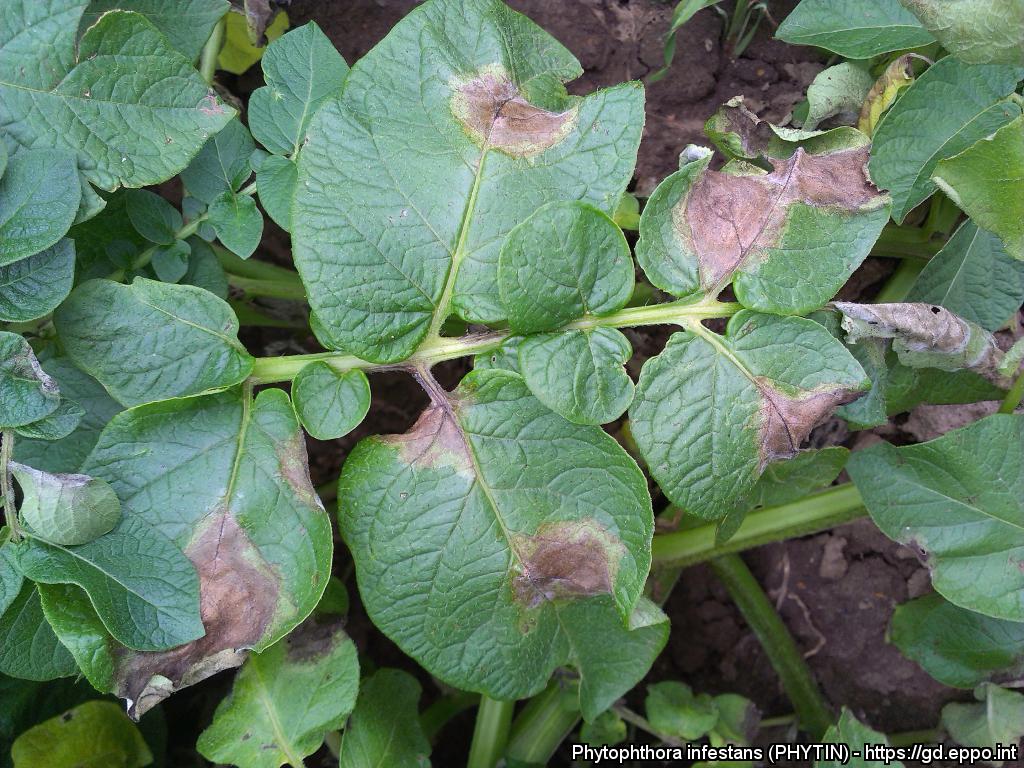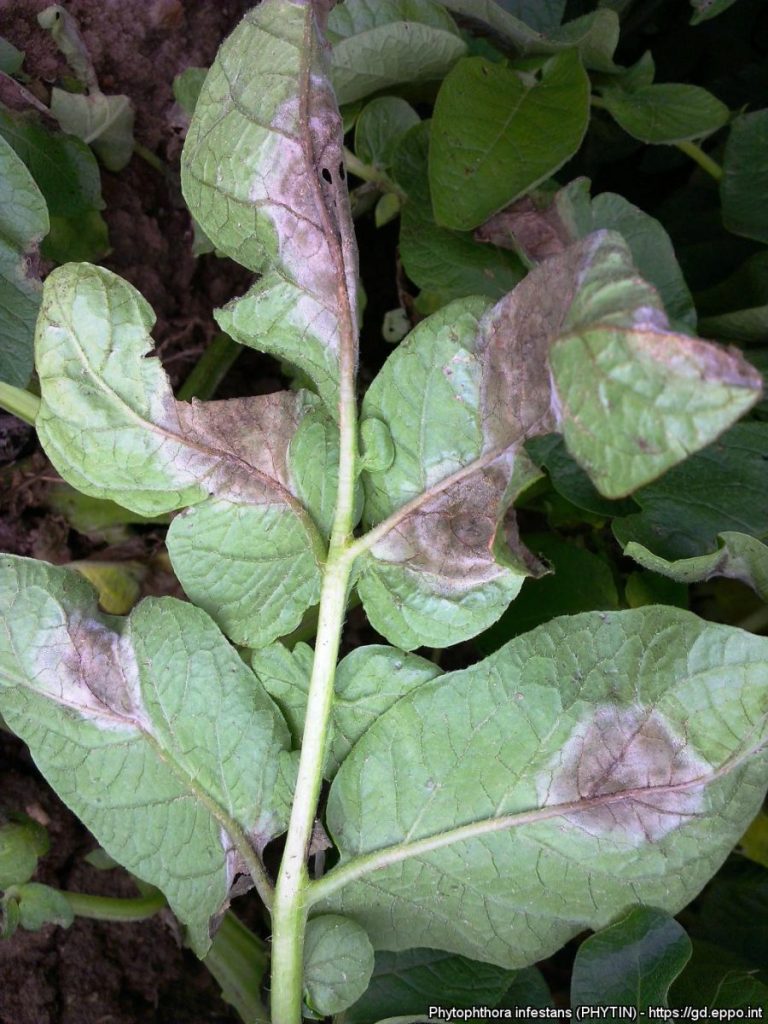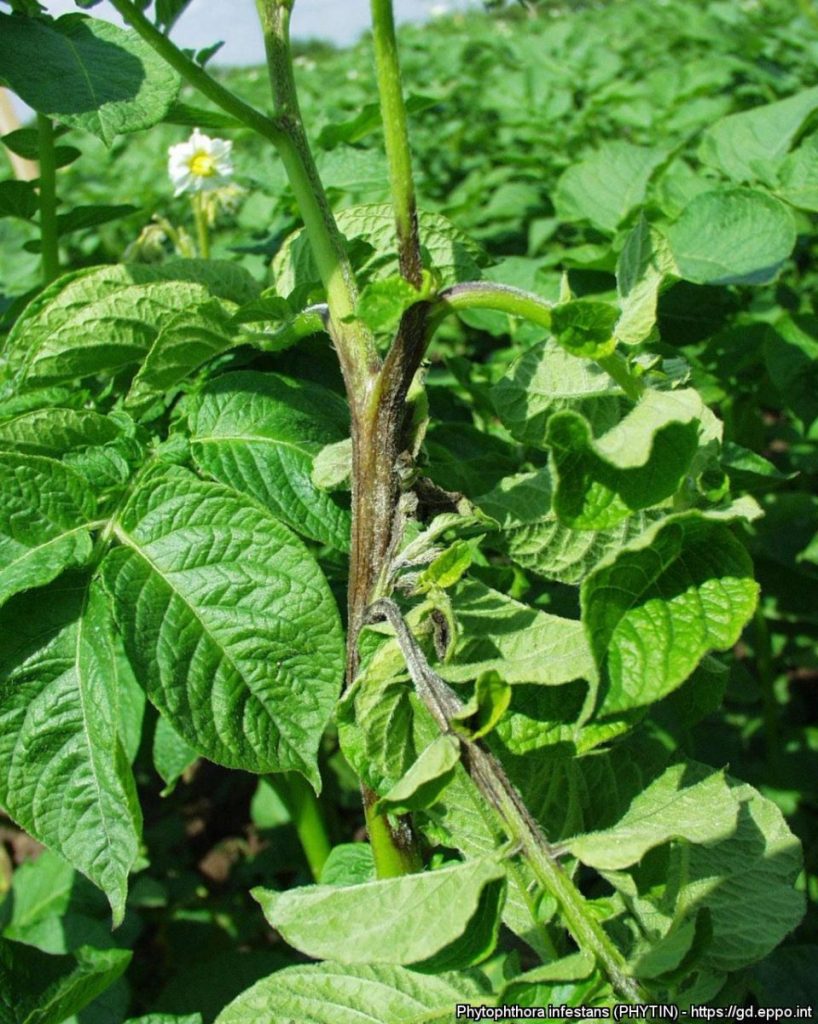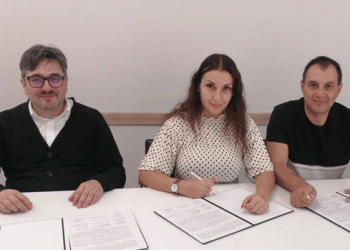Researcher, All-Russian Phytopathology Research Institute
e-mail: maria.erokhova@gmail.com
Despite the significant progress in investigating the potato late blight and putting control options into practice, based on knowledge on the plant pathogen, the disease still leads to huge losses of potato production due to a drop in yields and a lot of crop protection product inputs.
It is caused by the oomycete Phytophthora infestans, causing foliar, stem, tuber late blights.
If a tuber with a low inoculum enters a potato store, the disease is likely to lead to huge losses. The causal agent of late blight can survive at the temperature of 3 °C. Damage by plant pathogen on tuber skin allows opportunistic bacteria to invade and cause soft rotting, through potato skin.
Symptoms of foliar late blight (https://gd.eppo.int/taxon/PHYTIN/photos and https://www.cabidigitallibrary.org/doi/10.1079/cabicompendium.40970) are irregular-shaped leaf spots that expand rapidly into large lesions at the advanced stage of the disease development. The leaf necrotic areas at the edges on the upper surface of the leaf are surrounded by a lighter yellow chlorotic halo. During moist weather the white spore-bearing mould is developed at the edges of the lower surface of leaves. The symptoms of tuber late blight are areas in colour from brown to purplish on the tuber skin. A tan to reddish-brown rot is found under the tuber skin. This rot eventually extends into the center of a tuber. Main method of dispersal of this plant pathogen is transmission by air-borne zoosporangia from neighboring infected potato crops, volunteer potato plants and plants, grown prior to neighboring potato fields, in outgrade piles. Plants, grown in outgrade piles, as well as volunteer potato plants are likely to be the reservoirs for aphid-borne viral diseases and other crop diseases (Rhizoctonia disease; black dot, caused by Colletotrichum coccodes, powdery scab, caused by Spongospora subterranea) and crop pests (free-living nematodes, potato cyst nematodes, aphids). Furthermore, oospores are likely to be developed in these reservoirs of an inoculum. This can make the late blight more difficult to control due to the increased risk of developing the oomycete resistant populations to crop protection products in the condition of an increased number of treatments and rates of applications of fungicides (oomycides).
In the southern regions it is recommended to timely spray the outgrade piles by the treatment of diquate and glyphosate to kill any growth prior to any haulm being produced crop in outgrade piles (in the case of re-growth of plants in outgrade piles it is needed to spray these outgrade piles again). Kind of effective practice for controlling this young haulm in outgrade piles is a cover of sheeting with heavy gauge black polythene. Sheeting in the edge of outgrade piles needs to be sealed to prevent the dispersal of zoosporangia of the plant pathogen and animals tearing the sheeting. The application of glyphosate is not needed when the outgrade pile is covered with black polythene early.
It is really important to have outgrade piles well away from potato crops and watercourses.
The most common method of reproduction for P. infestans is asexual reproduction when zoosporangia germinate through hyphae or release zoospores with flagella which disperse in water films before encysting and infecting the plant. Oospores can persist in soil for a long time. So, for example, in line with information of researchers from the Netherlands (Plant Pathology journal, 2000), oospores remain infectious for the potato in sandy soils for 48 months, in light clay soils for 34 months when flooded. It was noticed that the maximum number of oospores was developed in the varieties with the low level of race-nonspecific resistance.
According to the data set from the European database Best4Soil (2020), it was recommended to run a five-year crop rotation to reduce the level of soil-borne inoculum of Phytophthora infestans (oospores), potato cyst nematodes, Rhizoctonia and other pests.
Some decades ago, the strategy for potato disease management was based on the use of a huge number of applications of crop protection products. However, due to the emergency of relatively new resistant genotypes of Phytophthora infestans (in some European countries, EU_43_A1 genotype that is resistant to mandipropamide at doses of up to 100 ppm); integrated disease management for potato has been much more widespread.
MAIN METHODS FOR INTEGRATED LATE BLIGHT MANAGEMENT FOR POTATO
• Growing potato varieties with a relatively high level of cultivar resistance.
• Destroying the initial inoculum sources (volunteer potato plants, outgrade piles, infected seed tubers and infected potato plants).
• Implementation of Decision Support Systems to make informed decisions on an optimal number of treatments of crop protection products and control late blight through application of fungicides (oomycides), taking account of the risk of development of late blight, cultivar resistance and weather conditions in the framework of anti-resistant strategy. The Russian-language computer programme (software) VNIIFBlight has been developed by specialists from the All-Russian Phytopathology Research Institute. The All-Russian Phytopathology Research Institute was granted the patent RU 2019663121 (2019) on Express forecasting – late blight software to make an online forecast for late blight development for the territory of the Russian Federation. The Decision Support System (DSS) AgroDozor is being used to help in providing an informed decision on application of crop protection products to control late blight in Russia. Some DSS programmes in other countries have been developed to forecast the risk of late blight development. For example, the online platform Hutton BlightSpy in the UKhelps in forecasting the risk of the late blight development. This resource is hosted by James Hutton Limited, weather data from The Norwegian Meteorological Institute licenced under Creative Commons Attribution 4.0 International license.
The resources/platforms have been developed in some regions in the framework of R & D projects (for example, in Europe – EuroBlight , in China – ChinaBlight). This kind of information supports potato growers to make informed decisions, taking account of the regional population structure and the level of resistance to fungicides (oomycides).
EuroBlight Fungicide Tables (https://agro.au.dk/forskning/internationale-platforme/euroblight/) are being maintained on the platform of the European consortium for specialists and organizations on late blight to control the late blight in other parts of potato plants and combat the early blight.
• Destroying infected tubers in a store to reduce the tuber losses and a seed-borne inoculum in the following year.











